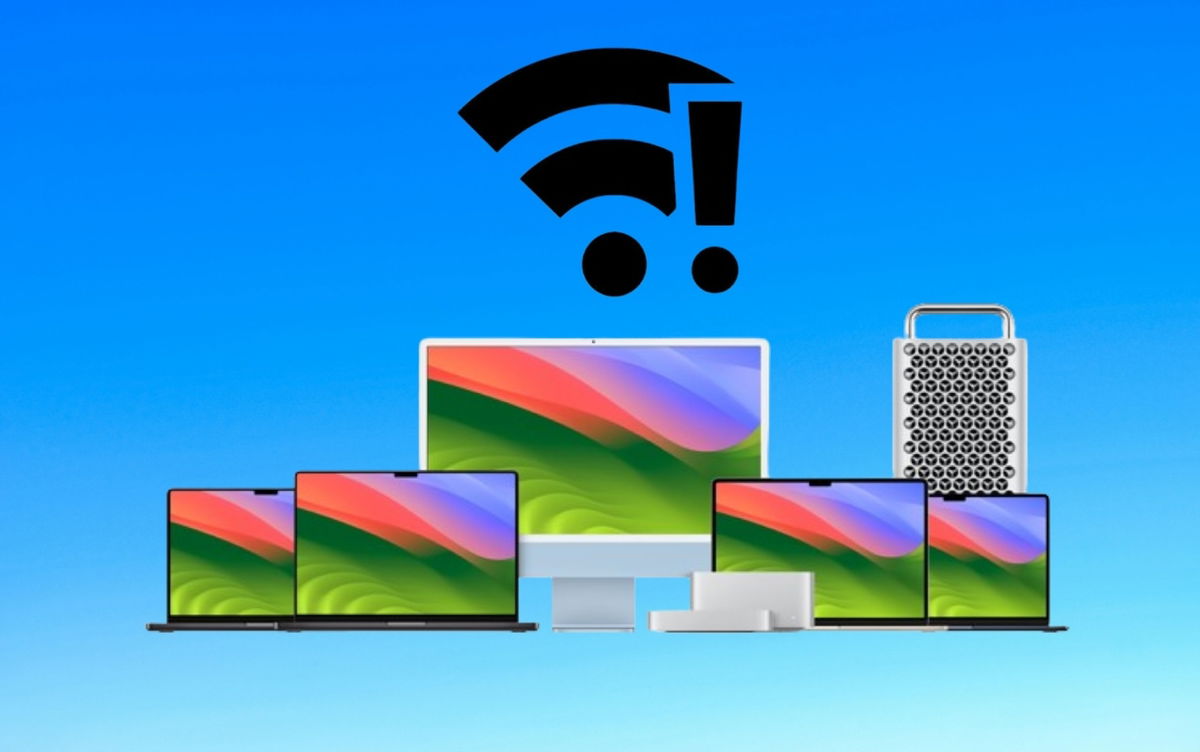What to do when your Mac doesn’t detect a Wi-Fi network?
Has your Wi-Fi network disappeared from the macOS interface? Here we show you different ways to fix the problem of not connecting to your Wi-Fi network
Mac and any other device with internet connection It can play a nasty trick on us by not showing us the Wi-Fi network we connect to on a daily basis.The problem can be more serious when they don’t recognize us and can’t connect, but it could just be a problem. type of initiative. These and similar situations can occur throughout the day, so In this article, we will show you different ways to solve your internet connection issue when Mac not detecting Wi-Fi network.We also recommend how to improve your Mac’s Wi-Fi in this article.
- If you have a Mac laptop or desktop and an Ethernet connection nearby, use that whenever possible
- Why might Wi-Fi be unstable on Mac?
- Turn Wi-Fi on and off on your Mac
- Restart the internet router
- First fix for Mac: Restart PRAM
- Remove PLIST files from Wi-Fi network
- Clear cache on Mac
- If you notice any disconnections or interruptions in your internet service, call your provider.
If you have a Mac laptop or desktop and an Ethernet connection nearby, use that whenever possible
Of course Not the most practical solutionFirst of all, because Newer portable Macs no longer have an Ethernet port was available on older computers. However, if you’re considering purchasing a USB-C hub adapter, choose one with an Ethernet port. You don’t know when you might need it. Also remember that the internet router should be nearby to avoid disturbance.
Why might Wi-Fi be unstable on Mac?
There are many reasons but The most common ones can come from the internet operator’s own router.from the secondary router if it is split or from the Mac in the background. In a very personal case, the dual-band router often fails to connect to 5G and tells me that the password is not entered. On the Mac side, sometimes it does not show the corresponding connection. Luckily, I resorted to the first solutions presented in this article.
Turn Wi-Fi on and off on your Mac

Control Center on Mac, turn off Wi-Fi
- Open the Mac Control Center or directly click on the shortcut in the menu bar. Click on Wi-Fi control
- Disable the connection by clicking on the toggle icon
- Wait for about 5 minutes before reactivating
- If the problem persistsTurn off Wi-Fi and Restart your Mac
- Then enable Wi-Fi connection and check if that solves the problem.
Restart the internet router
If the problem is not resolved yet, you need to check if the Wi-Fi network is visible on other devices. It is recommended to restart the internet router to quickly address the issue.If possible, turn it off for 5 minutes and then turn it on again.
First fix for Mac: Restart PRAM
PRAM is the memory responsible for storing the system configurationSo if you still don’t have Wi-Fi connection, here’s another tip that can be recommended Reset this memory on Intel-powered Macs.
- The procedure must be performed with the Mac turned off.
- Turn on Mac and then press Cmd + Option + P + R for 20 seconds
- Keep pressing the keys until you hear the startup sound.

Shortcut to reset PRAM on Intel Mac
On Macs with Apple silicon this option is no longer possible as the system does this by default when it needs to. Still having trouble with your Wi-Fi network? Let’s move on to other, more complicated steps.
Remove PLIST files from Wi-Fi network
Now we’ll have to do it Delete macOS preferences and settings filesis based on lists that contain the attributes or characteristics of the process. In this case, we will detect and eliminate those related to the Wi-Fi network that are giving us connection problems.

Find and Delete PLIST Files from Wi-Fi Network on Mac
- Turn off Wi-Fi on your Mac
- Go to Finder Click on the Go menu and then Go to folder
- Enter the route below: /Library/Preferences/SystemConfiguration/
- After entering the folder it contains, search for the following files:
- com.apple.airport.preferences.plist
- com.apple.network.identification.plist
- com.apple.wifi.message-tracer.plist
- Network Interfaces.plist
- preferences.plist
As a final step, select these files together pressing each one together with the Cmd key; press the secondary click and keep sending them to the dump. Later, Restart the Mac so that the system can add the new filesThis ensures that the Wi-Fi network connection will be fresh (as if your Mac were new).
Clear cache on Mac
As a final preventive step, You should delete the cache that is no longer useful. and may cause interference with your Wi-Fi network.

Find and clear Mac cache
- Open Finder, click the Go menu, and then click Go to Folder
- Enter the following path: ~/Library/Caches
- Select items containing the folder in question and delete them
If you notice any disconnections or interruptions in your internet service, call your provider.
It is important to note that Such failures can spread and become serious enough to cause internet outages or disconnections.This is a separate issue for your Mac and It belongs to your internet service provider.It wouldn’t hurt to check Downdetector and call your provider to confirm if there have been any outages nearby in the last few hours.

Downdetector is a website that reports problems with internet services
At the same time It is recommended that you contact them so they can review the quality of your link.. Most likely the provider’s router starts to malfunction after a few years of installation, or they start recording problems on their servers.
We hope these tips served the purpose of resolving the issue of connecting to your Mac Wi-Fi network.We leave you some other advice from Apple on this topic if you need it.
You can follow iPadify yourself On Facebook, WhatsApp, Twitter (X) or check our Telegram channel to stay updated with the latest tech news.
Source: i Padizate












